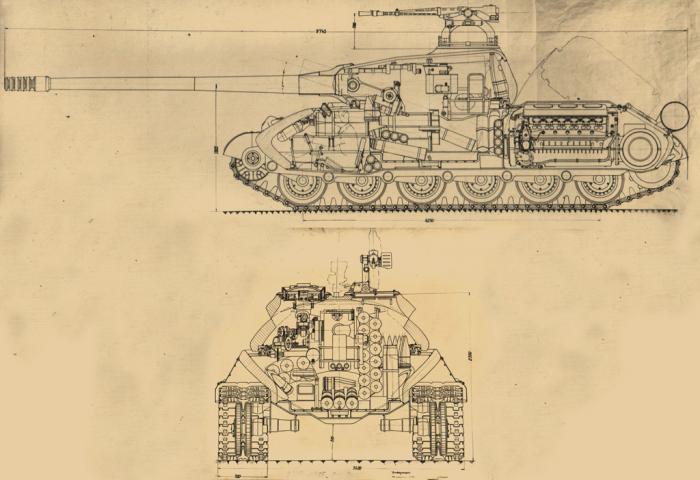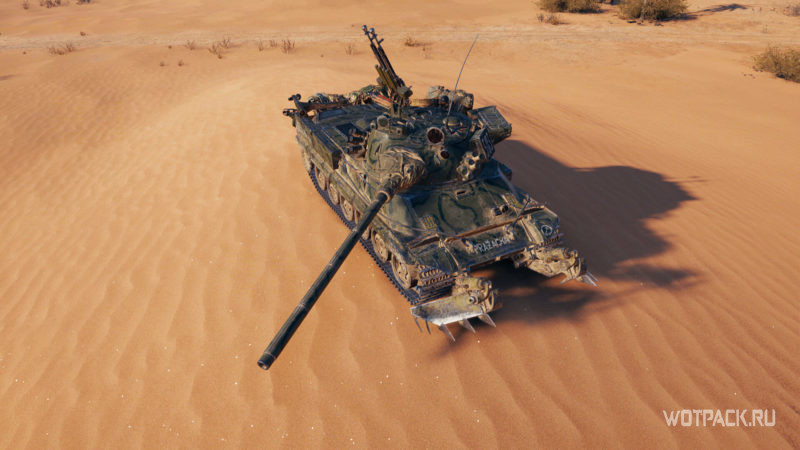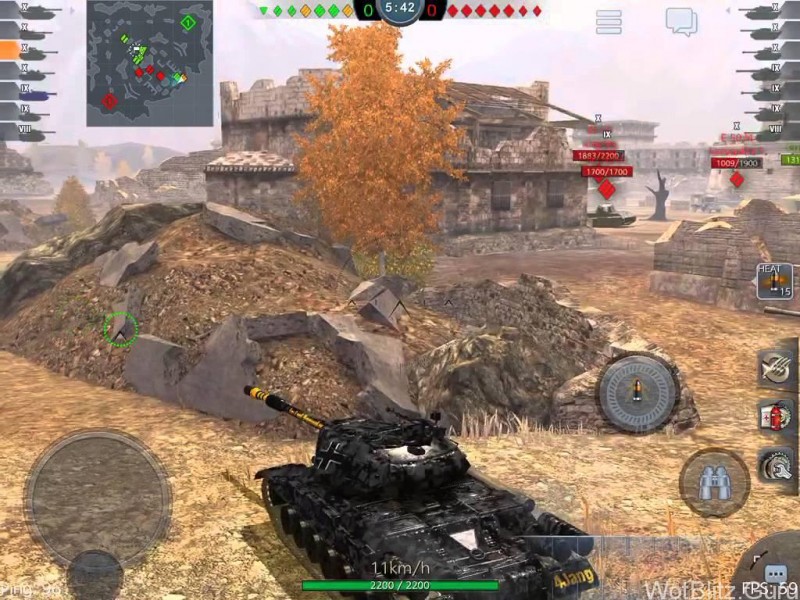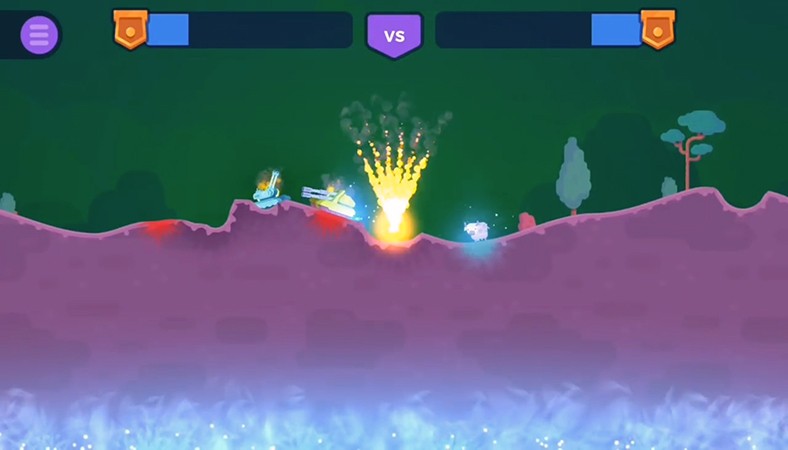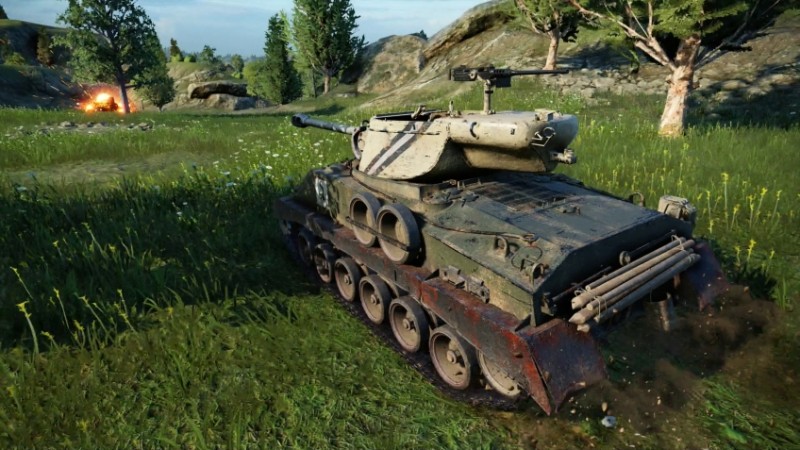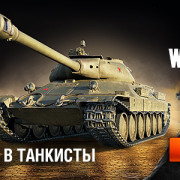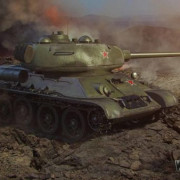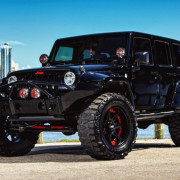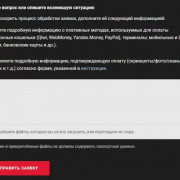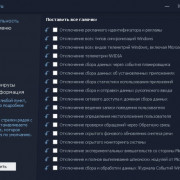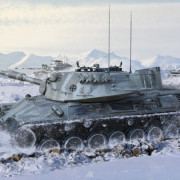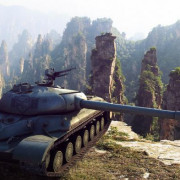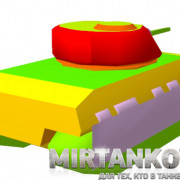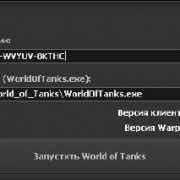Изменения ттх e 75 и ст-i на супертесте world of tanks
Содержание:
Compatible Consumables
Player Opinion
Pros and Cons
Pros:
Strong upper frontal armor and excellent whole frontal turret armor
Reasonable gun depression for a German heavy, on par with the M103 and T110E5
The large weight of 91.5t makes it good for ramming
Excellent sloped armor
Very strong, flat side armor perfect for sidescraping
Cons:
Very slow reload on the top gun compared to similar guns to its tier resulting low DPM
Lower accuracy than its predecessors
Tall silhouette
Strong inertia — being tracked while moving at high speed will rotate the tank almost 90° revealing side armor
Poor turret rotation speed
Performance
With strong armor (especially at the sides, which makes it very good for sidescraping), a powerful gun, and decent maneuverability for its size, the E-75 is a highly capable tank. It looks very similar to its predecessor Tiger II uparmored and upgunned to tier 9.
The tank has a very high silhouette, so don’t expect to do much hiding. Top gun reloads very slowly so make every shot count and aim carefully before each shot. The turret rotates very slowly so any medium tank can out-circle E-75.
However, in the top tier, E-75 is a perfectly balanced machine, whose presence in the list should make any opponent nervous. Very few opponents can penetrate your armor frontally without hitting weak spots.
The E-75 used to lack transmission hitbox, however it was placed to the front in one of the patches (E-75 is based on Tiger II and its powertrain), so it might suffer engine damage and fire from frontal hits. However it is still less prone to these than other German heavies due to relatively well-armored lower frontal plate, preventing penetrations in the first place.
The tank is very sensitive to the splash damage from artillery, not to mention a direct hit. It would be very useful to have the E-100’s screens, but in their absence, this tank must rely on agility and engine power.
The greatest danger for the E-75 in a direct clash comes from fast tanks. When fighting very strong opposition, «hull down» or «American» tank tactics can be used: hide the hull or even only the lower glacis behind a hill, stones or dead tank and shoot enemies from a distance. One can also «wiggle» the turret back and forth while reloading to make your vulnerable commander’s cupola a harder target to hit.
The E-75 is a good tank to side-scrape with as well, Especially if you can find a corner where you are leaving your left side behind cover, as that will keep your commanders hatch from being hit at all. The tracks on the E-75 will eat a lot of shots while side scraping, but few of them will track you if you are angled correctly, the tracks will just act as spaced armor.
Early Research
- All the guns from the Tiger II carry over and can be installed immediately.
- The first thing you should research is the upgraded suspension.
- From there the turret is a great next step, and you can take your pick from there.
Historical Info
The E-75 Standardpanzer was intended to be the standard heavy tank to be used as a replacement of the Tiger II and Jagdtiger. The E-75 would have been built on the same production lines as the E-50 for ease of manufacture, and the two vehicles were to share many components, including the same Maybach HL 234 engine. The E-75 would have had much thicker armour however, and in fact compared to the Tiger II the E-75 had improved hull armour all round. As its name indicates, the resulting vehicle would have weighed in at over 75 tonnes, reducing its speed to around 40 km/h. To offset the increased weight, the bogies were spaced differently than on the E-50, with an extra pair added on each side, giving the E-75 a slightly improved track to ground contact length.
According to some sources, the similarities between the E-50 and the E-75 went further; they were to be equipped with the same turret and 88mm L/71 or L/100 gun, along with an optical rangefinder for increased long range accuracy (German scientists and engineers had successfully designed a ‘schmal’ or narrow turret and infra-red lighting and sights for use on the prototype Panther F as the war drew to a close). Other sources however, indicate that the E-75 was to be fitted with the much larger Tiger II turret, which could be adapted to accommodate an even more powerful high velocity 10.5 cm gun.
Sources and External Links
External Links
https://en.wikipedia.org/wiki/E-75_Standardpanzer
| Light Tanks | |
| Medium Tanks | |
| Heavy Tanks | |
| Tank Destroyers | |
| Self-Propelled Artillery |
| USA | |
| UK | |
| Germany | |
| USSR | |
| China | |
| Japan |
Compatible Consumables
Player Opinion
Pros and Cons
Pros:
Strong upper frontal armor and excellent whole frontal turret armor
Reasonable gun depression for a German heavy, on par with the M103 and T110E5
The large weight of 91.5t makes it good for ramming
Excellent sloped armor
Very strong, flat side armor perfect for sidescraping
Cons:
Very slow reload on the top gun compared to similar guns to its tier resulting low DPM
Lower accuracy than its predecessors
Tall silhouette
Strong inertia — being tracked while moving at high speed will rotate the tank almost 90° revealing side armor
Poor turret rotation speed
Performance
With strong armor (especially at the sides, which makes it very good for sidescraping), a powerful gun, and decent maneuverability for its size, the E-75 is a highly capable tank. It looks very similar to its predecessor Tiger II uparmored and upgunned to tier 9.
The tank has a very high silhouette, so don’t expect to do much hiding. Top gun reloads very slowly so make every shot count and aim carefully before each shot. The turret rotates very slowly so any medium tank can out-circle E-75.
However, in the top tier, E-75 is a perfectly balanced machine, whose presence in the list should make any opponent nervous. Very few opponents can penetrate your armor frontally without hitting weak spots.
The E-75 used to lack transmission hitbox, however it was placed to the front in one of the patches (E-75 is based on Tiger II and its powertrain), so it might suffer engine damage and fire from frontal hits. However it is still less prone to these than other German heavies due to relatively well-armored lower frontal plate, preventing penetrations in the first place.
The tank is very sensitive to the splash damage from artillery, not to mention a direct hit. It would be very useful to have the E-100’s screens, but in their absence, this tank must rely on agility and engine power.
The greatest danger for the E-75 in a direct clash comes from fast tanks. When fighting very strong opposition, «hull down» or «American» tank tactics can be used: hide the hull or even only the lower glacis behind a hill, stones or dead tank and shoot enemies from a distance. One can also «wiggle» the turret back and forth while reloading to make your vulnerable commander’s cupola a harder target to hit.
The E-75 is a good tank to side-scrape with as well, Especially if you can find a corner where you are leaving your left side behind cover, as that will keep your commanders hatch from being hit at all. The tracks on the E-75 will eat a lot of shots while side scraping, but few of them will track you if you are angled correctly, the tracks will just act as spaced armor.
Early Research
- All the guns from the Tiger II carry over and can be installed immediately.
- The first thing you should research is the upgraded suspension.
- From there the turret is a great next step, and you can take your pick from there.
Historical Info
The E-75 Standardpanzer was intended to be the standard heavy tank to be used as a replacement of the Tiger II and Jagdtiger. The E-75 would have been built on the same production lines as the E-50 for ease of manufacture, and the two vehicles were to share many components, including the same Maybach HL 234 engine. The E-75 would have had much thicker armour however, and in fact compared to the Tiger II the E-75 had improved hull armour all round. As its name indicates, the resulting vehicle would have weighed in at over 75 tonnes, reducing its speed to around 40 km/h. To offset the increased weight, the bogies were spaced differently than on the E-50, with an extra pair added on each side, giving the E-75 a slightly improved track to ground contact length.
According to some sources, the similarities between the E-50 and the E-75 went further; they were to be equipped with the same turret and 88mm L/71 or L/100 gun, along with an optical rangefinder for increased long range accuracy (German scientists and engineers had successfully designed a ‘schmal’ or narrow turret and infra-red lighting and sights for use on the prototype Panther F as the war drew to a close). Other sources however, indicate that the E-75 was to be fitted with the much larger Tiger II turret, which could be adapted to accommodate an even more powerful high velocity 10.5 cm gun.
Sources and External Links
External Links
https://en.wikipedia.org/wiki/E-75_Standardpanzer
| Light Tanks | |
| Medium Tanks | |
| Heavy Tanks | |
| Tank Destroyers | |
| Self-Propelled Artillery |
| USA | |
| UK | |
| Germany | |
| USSR | |
| China | |
| Japan |
История.
Е-75 создавался как основной немецкий тяжелый танк, призванный в 1945-м году сменить собой «Королевский Тигр». Несмотря на все ухудшающееся положение с поставками сырья, а также все более обезнадеживающее положением на фронте, немецкие конструкторы трудились над воплощением в металле очередного кошмара для вражеских войск, который бы достойно продолжил дело, начатое еще «Тигром» и продолженное «Королевским Тигром».
Частично Е-серия стала и результатом поисков оптимизации танкостроения, главными критериями которого становились общность узлов и агрегатов для основных боевых машин, упрощение производства, а также замена компонентов бронестали, которые поступали в Германию в конце войны с большими перебоями. Также, впервые в истории немецкого танкостроения, конструкторская часть работы была доверена организациям, которые ранее никогда не занимались этой отраслью. Таким образом, немецкое командование пыталось добиться свежей конструкторской мысли, а сама серия танков стала носить название «Е» — Entwicklung – то есть, «Развитие».
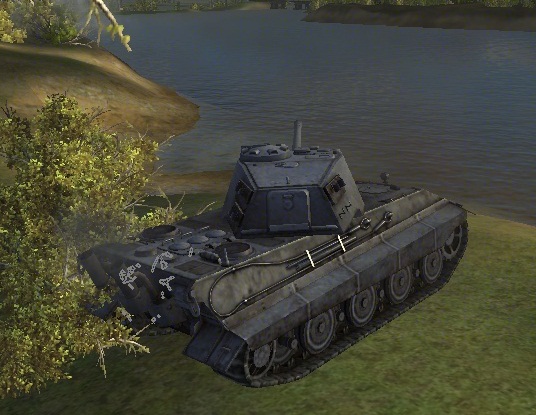
Основными отличиями Е-75 от «Королевского Тигра» стала ходовая часть – на замену плавной, но ненадежной «торсионной» подвеске пришла новая, состоявшая из 8-ми пар катков с каждой стороны, что упрощало производство и делало конструкцию более выносливой. Плавность хода, которая ранее обеспечивала «Тиграм» и «Пантерам» хорошие результаты стрельбы на ходу, теперь компенсировалась стабилизаторами вертикальной наводки, которые Германия стала разрабатывать и применять первой в мире. То же самое стоит сказать и о приборах ночного видения – они разрабатывались еще для последних модификаций «Пантер». С их помощью немецкие танки были способны отслеживать цели на расстоянии до 800 метров, а поражать – на расстоянии до 400 метров.
В плане бронезащиты немецкие конструкторские бюро, которые теперь занимались созданием новой серии танков, не стали придумывать ничего нового, в отличие от советских, которые в этот период уже создавали знаменитый «щучий нос» ИС-3. Угол верхней лобовой бронеплиты Е-75 имел больший наклон, а толщина брони была на 10 мм больше, чем у «Королевского Тигра». Таким образом, 160 мм наклонный ВЛД Е-75 был эквивалентен 250 мм брони, расположенной под прямым углом. Толщина бортовой брони была доведена до 120 мм, однако, она сохранила от своих предшественников прямую форму и не держала удар от современных советских противотанковых орудий. Башню предполагалось заимствовать «Пантеры» модификации H (то есть, Schmalturm).
Огневую мощь обеспечивало точнейшее скорострельное 105-мм противотанковое орудие длиной 100 калибров, которое было способно поражать абсолютно все бронированные цели антигитлеровской коалиции на дистанции около 4 000 метров. В дальнейшем предпринимались попытки установки 128 мм орудия с длиной ствола в 55 калибров.
Силовая установка, по ожиданиям конструкторов, должна была выдавать 1200 л/с и разгонять новый тяжелый танк до 40 км/ч.
Однако, все приближающиеся к Берлину войска антигитлеровской коалиции свели на нет даже постройку опытного образца Е-75. И, скорее всего, к лучшему для нас. Ведь в лобовой проекции этот танк способен был бы выдерживать обстрел из абсолютно любого орудия врага (даже послевоенного), а обстрел из его собственного орудия (128мм) смог выдержать лишь опытный советский танк ИС-7, созданный лишь через 9 лет. Одним словом, если бы война затянулась еще хотя бы на полгода, то мир бы увидел достойную замену «Королевскому Тигру» — Е-75.
E 75 TS в игре
Исследование и прокачка
Эта машина является премиум техникой и не требует прокачки дополнительных модулей, она имеет «Элитный» статус, приносит больше кредитов и опыта за каждый бой, а также обладает рядом других преимуществ.
Боевая эффективность
Как играть на E 75 TS
- Достоинства:
- быстрый разгон;
- хорошее бронепробитие;
- неплохой урон за выстрел;
- хорошие УВН.
- Недостатки:
- слабая броня корпуса;
- долгое сведение;
- медленное вращение как башни так и самого танка;
- высокая пожароопасность;
- малый боекомплект;
- большие габариты.
Оборудование, снаряжение и боекомплект
top
ББ30
БП10
ОФ2
- Оборудование
- Досылатель уменьшит время перезарядки орудия.
- Стабилизатор вертикальной наводки уменьшит разброс в движении, и время полного сведения.
- Улучшенная вентиляция улучшит все основные характеристики машины.
1
ББ30
БП10
ОФ2
- Оборудование
- Досылатель уменьшит время перезарядки орудия.
- Стабилизатор вертикальной наводки уменьшит разброс в движении, и время полного сведения.
- Просветленная оптика увеличит дальность обзора.
Универсальная
1
Снайпер
- Снаряжение
Стандартный набор снаряжения: ремкомплект, аптечка и огнетушитель. Горит танк редко, поэтому огнетушитель можно заменить на 100-октановый бензин или шоколад.
- Боекомплект
Основную часть боекомплекта составляют бронебойные снаряды, имеет смысл возить несколько специальных подкалиберных снарядов для встречи с бронированными противниками. Осколочно-фугасные стоит загружать для легкобронированных противников, сбития захвата базы или добивания противников с малым запасом прочности.
История изменений
-
Основная статья: История изменений E 75 TS
История изменений
- Обновление 1.7.0
Введён на основной сервер в качестве акционного немецкого тяжёлого танка VIII уровня.
Дополнительные модули.
Ввиду основных преимуществ и недостатков, предполагающих более ближний бой, откажемся от классического для немцев «набора Пт-шника»: стереотрубы, приводов сведения….а наиболее полезными дополнительными модулями для Е-75 в ближнем бою станут:
- досылатель (компенсируем низкую скорострельность, увеличивая урон в минуту на фоне более скорострельных, но менее дамажных одноклассников);
- стабилизатор вертикальной наводки (имеет преимущество перед приводами наводки в ближнем бою, изначально мешая увеличению разброса, в то время, как приводы сокращают время сведения, что наиболее полезно при ведении огня с дальних дистанций);
- вентилятор (улучшаем все характеристики танка на 5%, а главное, скорость перезарядки, сведения и маневренность).
Таким образом, наш Е-75, даже застигнутый врасплох, способен, почти не тратя времени на сведение, произвести быстрый залп по врагу и перезарядится, заняв на целых 15% меньше времени, чем того ожидает враг
Кроме того, лучшая маневренность и без того достаточно верткого Е-75 позволит Вам побыстрее воспользоваться укрытием, а также занять выгодные позиции в самом начале боя, увеличит дальность связи, обзор, хотя для ТТ с задачами Е-75 это не самое важное
Из расходников на данный момент целесообразнее всего использовать классику: малая аптечка, ручной огнетушитель и малый ремкомплект. Так как при том количестве артиллерий, которое сейчас наблюдается почти в каждом высокоуровневом бою, есть существенный риск потерять кого-то из членов экипажа. По той же причине не использовать малый ремкомплект – значит стоять под артиллерией со сбитой гусеницей и также подвергать себя риску, а команду лишать танка, который способен вытянуть бой. Огнетушитель же стоит с собой возить ввиду того, что новые вражеские орудия с их пробитием теперь вполне способны поджечь танк.
Основные специальности:
- командир: боевое братство (общее улучшение качеств и характеристик, прибавка к эффекту вентилятора 5%), орлиный глаз (в комбинации с вентилятором дает эффект, равный просветленке)и мастер на все руки ( возможность приберечь аптечку при выведении из строя члена экипажа);
- наводчик: боевое братство, снайпер (ухудшение возможностей врага) и плавный поворот башни (в сочетании с массой танка и стабилизатором);
- мехвод: боевое братство, чистота и порядок (меньший шанс возгорания выстрелом в лоб) и мастер тарана (чему способствует и масса танка);
- радист: боевое братство, радиоперехват (+ к вентилятору и орлиному глазу) и пожаротушение;
- заряжающий: боевое братство, бесконтактная боукладка ( шанс повреждения БК немцев ысок по причине прямых нерикошетных и малобронированных бортов), пожаротушение.
История
В мае 1942 года главный конструктор отдела испытаний танкового вооружения (WaPruf 6) Э. Книпкамп создал специальную исследовательскую группу, которую возглавил лично. Эта группа должна была разработать ряд проектов боевых машин, в которых предполагалось учесть весь полученный к этому времени боевой опыт в области бронетехники. Работа эта была личной инициативой Книпкампа, и, естественно, шла довольно медленно — основные силы отдела испытаний танкового вооружения были задействованы на обеспечение серийного производства танков и разработку новых образцов по заказам армии. Тем не менее, к апрелю 1943 года группа сформулировала основные требования, которые следовало воплотить в новых боевых машинах. Весь проект получил обозначение «серия Е» (Е обозначает «разработка», от немецкого «Entwicklung»).
В машинах серии Е предусматривалось реализовать следующие принципы:
- максимально усилить защиту лобовой части корпуса, усилить вооружение и возимый боекомплект;
- создать единый блок для трансмиссии и обеспечить его простой монтаж и демонтаж в корпусе для упрощения обслуживания и ремонта;
- для увеличения внутреннего объёма корпуса и снижения общей высоты машин использовать подвеску с размещением упругих элементов снаружи корпуса, а также изменить компоновку, разместив двигатель с трансмиссией в корме;
- конструкция подвески должна обеспечить возможность натяжения гусеницы при сорванном ленивце или части катков для возможности отвода танка в тыл;
- использовать максимальное количество одинаковых узлов и агрегатов на всех боевых машинах, для облегчения производства, обслуживания и ремонта.
Танки программы «E»:
- — малый разведывательный танк и истребитель танков массой около 15 тонн. Должен был вооружаться 75-мм пушкой Pak 40 L/48.
- — истребитель танков массой около 25—30 тонн. Должен был вооружаться 75-мм пушкой Pak L/70.
- — средний танк массой около 50-55 тонн. Высокая масса танка по сути переводила его в разряд тяжёлых.
- — тяжёлый танк массой около 75-80 тонн.
- — сверхтяжелый танк массой 130—140 тонн, альтернатива сверхтяжелому танку «Maus».
В массовой культуре
Стендовый моделизм
Танки E 10-25-50-75-Flakpanzer — выпускает фирма Trumpeter, в 1:35 масштабе. Также на рынке присутствуют более мелкие масштабы этих танков, в частности в 72 масштабе выпускаются фирмой Modelcollect (Китай).
Танк Е 100 различных модификаций в масштабе 1:35 выпускаются фирмами Dragon (Китай) с башней от танка Маус, Trumpeter (Китай) с Двумя вариантами башен: выдуманной башней якобы фирмы Henschel и башней фирмы Krupp, аналогичной представленной в игре World of Tanks. Trumpeter также выпускает модель самоходной установки Jagdpanzer E100, оснащенной 170 мм стволом (фантазия на тему, как бы она могло выглядеть, если бы немецкие конструкторы начали разработку такой САУ).
В компьютерных играх
В MMO-играх World of Tanks, World of Tanks Blitz и World of Tanks Console представлены следующие танки серии E:
E 25 (как премиумная противотанковая САУ (ПТ-САУ) 7 уровня) в танковом сленге «блоха», E 50 «епись» и выдуманный разработчиками E 50 Ausf. M «мытый епись» (как средние танки 9 и 10 уровня соответственно), E 75 и E 100 «сотка, эстонец» (как тяжелые танки 9 и 10 уровня соответственно), Jagdpanzer (StuG) E 100 «яга» (Сверхтяжёлая противотанковая САУ (ПТ-САУ) 10 уровня), выдуманные САУ на базе E 100: Waffenträger auf E 100 «вафля»(ПТ-САУ 10 уровня(выведена из игры)) и G.W. E 100 (ранее-G.W. Type E) (как гаубичная САУ 10 уровня).
Танки Е-100 (башня от Pz. Kpfw Vlll Maus), E-75, Е-50, Е-25 и Е-10 представлены в модификации «GZM» для игры Блицкриг.
Тяжёлые танки E-50, E-75 и E-100, Противотанковая САУ JgPz E-100, E-10, Сверхтяжёлый танк Е-90 (Танк E-100 с башней, схожей с башней Pz.Kpfw Vl Ausf B «Tiger ll») представлены в браузерной игре Ground War: Tanks.
Вымышленный танк E-79, очень похожий по внешнему виду и компоновке на E-75, доступен как один из управляемых танков в игре Panzer Front.
Танк Е-100 (башня от Pz. Kpfw Vlll Maus), представлен в игре War Thunder, но недоступен широкому пользованию т. к. является очень редким и акционным, имеется лишь у 200 игроков.
Стоит отметить, что тактико-технические характеристики бронетехники, особенности её применения в бою, и тому подобное, часто искажается в компьютерных играх.
Compatible Consumables
Avis des joueurs
Points forts/faibles
Points forts :
Strong upper frontal armor and excellent whole frontal turret armor
Reasonable gun depression for a German heavy, on par with the M103 and T110E5
The large weight of 91.5t makes it good for ramming
Excellent sloped armor
Very strong, flat side armor perfect for sidescraping
Points faibles :
Very slow reload on the top gun compared to similar guns to its tier resulting low DPM
Lower accuracy than its predecessors
Tall silhouette
Strong inertia — being tracked while moving at high speed will rotate the tank almost 90° revealing side armor
Poor turret rotation speed
Performance
With strong armor (especially at the sides, which makes it very good for sidescraping), a powerful gun, and decent maneuverability for its size, the E-75 is a highly capable tank. It looks very similar to its predecessor Tiger II uparmored and upgunned to tier 9.
The tank has a very high silhouette, so don’t expect to do much hiding. Top gun reloads very slowly so make every shot count and aim carefully before each shot. The turret rotates very slowly so any medium tank can out-circle E-75.
However, in the top tier, E-75 is a perfectly balanced machine, whose presence in the list should make any opponent nervous. Very few opponents can penetrate your armor frontally without hitting weak spots.
The E-75 used to lack transmission hitbox, however it was placed to the front in one of the patches (E-75 is based on Tiger II and its powertrain), so it might suffer engine damage and fire from frontal hits. However it is still less prone to these than other German heavies due to relatively well-armored lower frontal plate, preventing penetrations in the first place.
The tank is very sensitive to the splash damage from artillery, not to mention a direct hit. It would be very useful to have the E-100’s screens, but in their absence, this tank must rely on agility and engine power.
The greatest danger for the E-75 in a direct clash comes from fast tanks. When fighting very strong opposition, «hull down» or «American» tank tactics can be used: hide the hull or even only the lower glacis behind a hill, stones or dead tank and shoot enemies from a distance. One can also «wiggle» the turret back and forth while reloading to make your vulnerable commander’s cupola a harder target to hit.
The E-75 is a good tank to side-scrape with as well, Especially if you can find a corner where you are leaving your left side behind cover, as that will keep your commanders hatch from being hit at all. The tracks on the E-75 will eat a lot of shots while side scraping, but few of them will track you if you are angled correctly, the tracks will just act as spaced armor.
Modules prioritaires
- All the guns from the Tiger II carry over and can be installed immediately.
- The first thing you should research is the upgraded suspension.
- From there the turret is a great next step, and you can take your pick from there.
Informations Historiques
The E-75 Standardpanzer was intended to be the standard heavy tank to be used as a replacement of the Tiger II and Jagdtiger. The E-75 would have been built on the same production lines as the E-50 for ease of manufacture, and the two vehicles were to share many components, including the same Maybach HL 234 engine. The E-75 would have had much thicker armour however, and in fact compared to the Tiger II the E-75 had improved hull armour all round. As its name indicates, the resulting vehicle would have weighed in at over 75 tonnes, reducing its speed to around 40 km/h. To offset the increased weight, the bogies were spaced differently than on the E-50, with an extra pair added on each side, giving the E-75 a slightly improved track to ground contact length.
According to some sources, the similarities between the E-50 and the E-75 went further; they were to be equipped with the same turret and 88mm L/71 or L/100 gun, along with an optical rangefinder for increased long range accuracy (German scientists and engineers had successfully designed a ‘schmal’ or narrow turret and infra-red lighting and sights for use on the prototype Panther F as the war drew to a close). Other sources however, indicate that the E-75 was to be fitted with the much larger Tiger II turret, which could be adapted to accommodate an even more powerful high velocity 10.5 cm gun.
Sources et Liens Externes
Liens Externes
https://en.wikipedia.org/wiki/E-75_Standardpanzer
| Light Tanks | |
| Medium Tanks | |
| Heavy Tanks | |
| Tank Destroyers | |
| Self-Propelled Artillery |
| USA | |
| UK | |
| Germany | |
| USSR | |
| China | |
| Japan |
Compatible Consumables
Player Opinion
Pros and Cons
Pros:
Strong upper frontal armor and excellent whole frontal turret armor
Reasonable gun depression for a German heavy, on par with the M103 and T110E5
The large weight of 91.5t makes it good for ramming
Excellent sloped armor
Very strong, flat side armor perfect for sidescraping
Cons:
Very slow reload on the top gun compared to similar guns to its tier resulting low DPM
Lower accuracy than its predecessors
Tall silhouette
Strong inertia — being tracked while moving at high speed will rotate the tank almost 90° revealing side armor
Poor turret rotation speed
Performance
With strong armor (especially at the sides, which makes it very good for sidescraping), a powerful gun, and decent maneuverability for its size, the E-75 is a highly capable tank. It looks very similar to its predecessor Tiger II uparmored and upgunned to tier 9.
The tank has a very high silhouette, so don’t expect to do much hiding. Top gun reloads very slowly so make every shot count and aim carefully before each shot. The turret rotates very slowly so any medium tank can out-circle E-75.
However, in the top tier, E-75 is a perfectly balanced machine, whose presence in the list should make any opponent nervous. Very few opponents can penetrate your armor frontally without hitting weak spots.
The E-75 used to lack transmission hitbox, however it was placed to the front in one of the patches (E-75 is based on Tiger II and its powertrain), so it might suffer engine damage and fire from frontal hits. However it is still less prone to these than other German heavies due to relatively well-armored lower frontal plate, preventing penetrations in the first place.
The tank is very sensitive to the splash damage from artillery, not to mention a direct hit. It would be very useful to have the E-100’s screens, but in their absence, this tank must rely on agility and engine power.
The greatest danger for the E-75 in a direct clash comes from fast tanks. When fighting very strong opposition, «hull down» or «American» tank tactics can be used: hide the hull or even only the lower glacis behind a hill, stones or dead tank and shoot enemies from a distance. One can also «wiggle» the turret back and forth while reloading to make your vulnerable commander’s cupola a harder target to hit.
The E-75 is a good tank to side-scrape with as well, Especially if you can find a corner where you are leaving your left side behind cover, as that will keep your commanders hatch from being hit at all. The tracks on the E-75 will eat a lot of shots while side scraping, but few of them will track you if you are angled correctly, the tracks will just act as spaced armor.
Early Research
- All the guns from the Tiger II carry over and can be installed immediately.
- The first thing you should research is the upgraded suspension.
- From there the turret is a great next step, and you can take your pick from there.
Historical Info
The E-75 Standardpanzer was intended to be the standard heavy tank to be used as a replacement of the Tiger II and Jagdtiger. The E-75 would have been built on the same production lines as the E-50 for ease of manufacture, and the two vehicles were to share many components, including the same Maybach HL 234 engine. The E-75 would have had much thicker armour however, and in fact compared to the Tiger II the E-75 had improved hull armour all round. As its name indicates, the resulting vehicle would have weighed in at over 75 tonnes, reducing its speed to around 40 km/h. To offset the increased weight, the bogies were spaced differently than on the E-50, with an extra pair added on each side, giving the E-75 a slightly improved track to ground contact length.
According to some sources, the similarities between the E-50 and the E-75 went further; they were to be equipped with the same turret and 88mm L/71 or L/100 gun, along with an optical rangefinder for increased long range accuracy (German scientists and engineers had successfully designed a ‘schmal’ or narrow turret and infra-red lighting and sights for use on the prototype Panther F as the war drew to a close). Other sources however, indicate that the E-75 was to be fitted with the much larger Tiger II turret, which could be adapted to accommodate an even more powerful high velocity 10.5 cm gun.
Sources and External Links
External Links
https://en.wikipedia.org/wiki/E-75_Standardpanzer
| Light Tanks | |
| Medium Tanks | |
| Heavy Tanks | |
| Tank Destroyers | |
| Self-Propelled Artillery |
| USA | |
| UK | |
| Germany | |
| USSR | |
| China | |
| Japan |
Е-75 в «Мире Танков».
В игре мы видим серьезный танк 9-го уровня, имеющий свой собственный набор преимуществ и недостатков, из которого исходит и тактика применения этой машины. В угоду балансу, увы, мы не увидим в перечне модулей Е-75 ни 105мм орудия с длиной ствола в 100 калибров, ни «Шмальтурм», а полюбоваться новой подвеской можно будет лишь на младшем собрате – Е-50. Однако, такие вольности разработчики вполне могли себе позволить, ведь чертежей с окончательно утвержденными решениями по этому проекту не существует. То же самое касается и расположения трансмиссии – одна из самых больных тем для владельцев Е-75. Однако, ввиду незаконченности чертежей, ни игроки разработчикам, ни разработчики игрокам никогда не смогут полностью доказать ту или иную точку зрения.
В целом же Е-75 – пожалуй, первый немецкий танк, где игрок ощущает, что он действительно на ТТ: хорошая лобовая бронезащита позволяет уверенно вести ближний бой. Правильная постановка ромбом и доворот корпусом по время выстрела врага также делают свое дело. Особенно после последнего патча, где разработчиками был увеличен шанс рикошета от брони, расположенной под рациональными углами наклона.
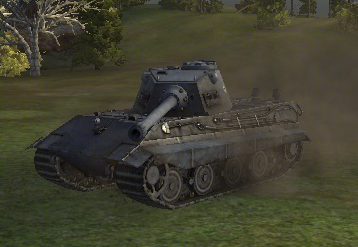
Способность вести ближний бой также нивелирует сравнительную «косость» 128-мм орудия Е-75 (разброс на 100м — 0.38) по отношению к предыдущим немецким орудиям (KwK43 L71 (0.34 на 100 м), KwK 46 L68 (0.34 на 100 м). На ближних и средних дистанциях оно вполне позволяет выцеливать уязвимые места в корпусе вражеского танка. При знании таких мест низкая бронепробиваемость орудия отходит на второй план. К тому же, этот недостаток сейчас можно решить, приобретая подкалиберные снаряды за кредиты. Это будет полезно при ведении боя на средних дистанциях, когда уязвимое место врага выцелить труднее.
Несмотря на 92 тонны веса, Е-75 является достаточно маневренным танком, которого сложновато «закаруселить» таким СТ, как Тype59 и Т-54. Кроме того, большой вес танка делает более легкой стрельбу на ходу, а с вводом физики предоставляет обладателю Е-75 новые преимущества. Только на Е-75 можно ехать со коростью 30 км/ч, упереться в Т-54 и, продолжая движение со скоростью 11 км/ч, уверенно столкнуть того с обрыва.
Основным слабым местом Е-75, при достаточно крепком лобовом бронировании, является его НЛД. Хотя он и защищает от орудий с пробитием около 225 мм, но все же с введением в игру новых американских и советских орудий с пробитием под 270мм, а также с перенесением трансмиссии вперед, танковать на Е-75 стало намного неоправданнее и тяжелее.
